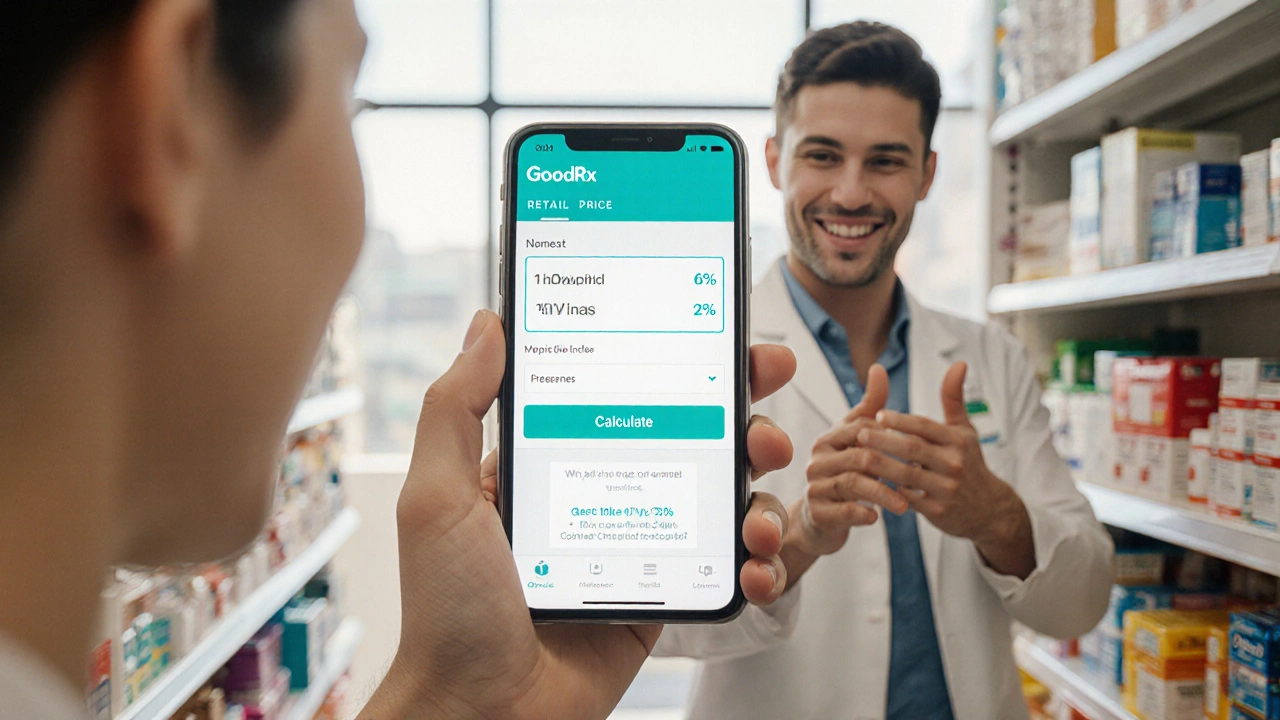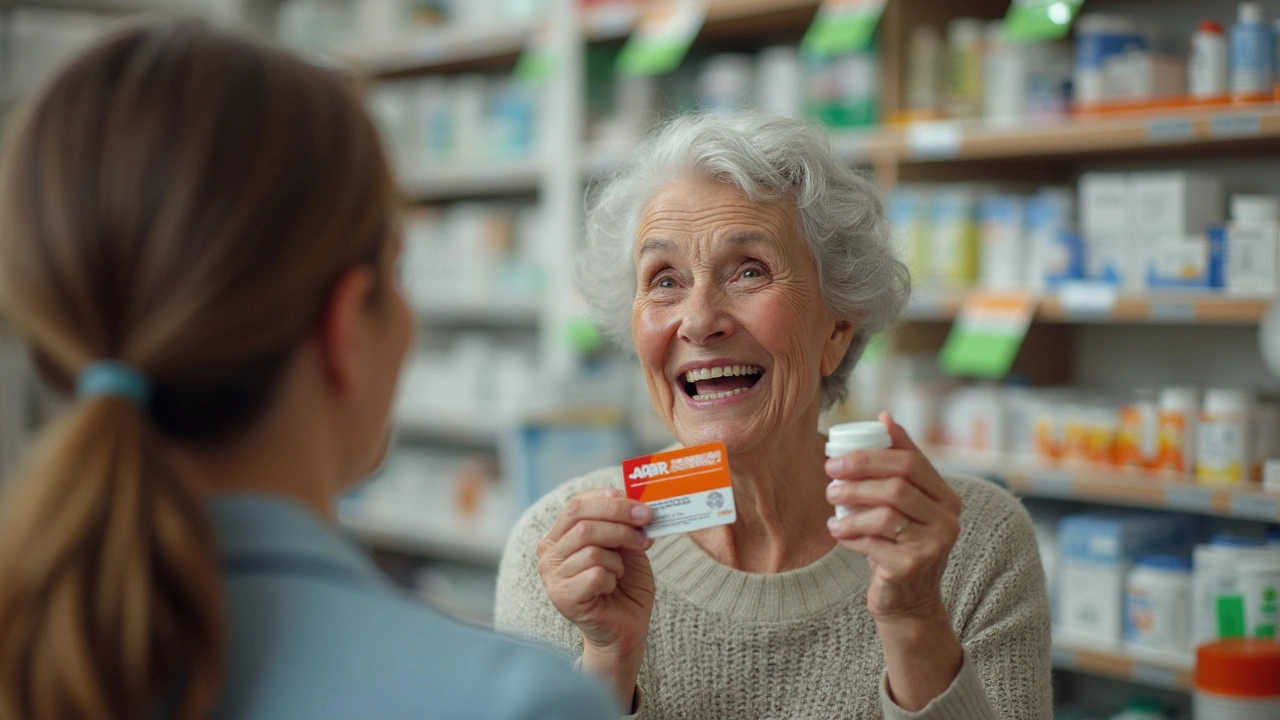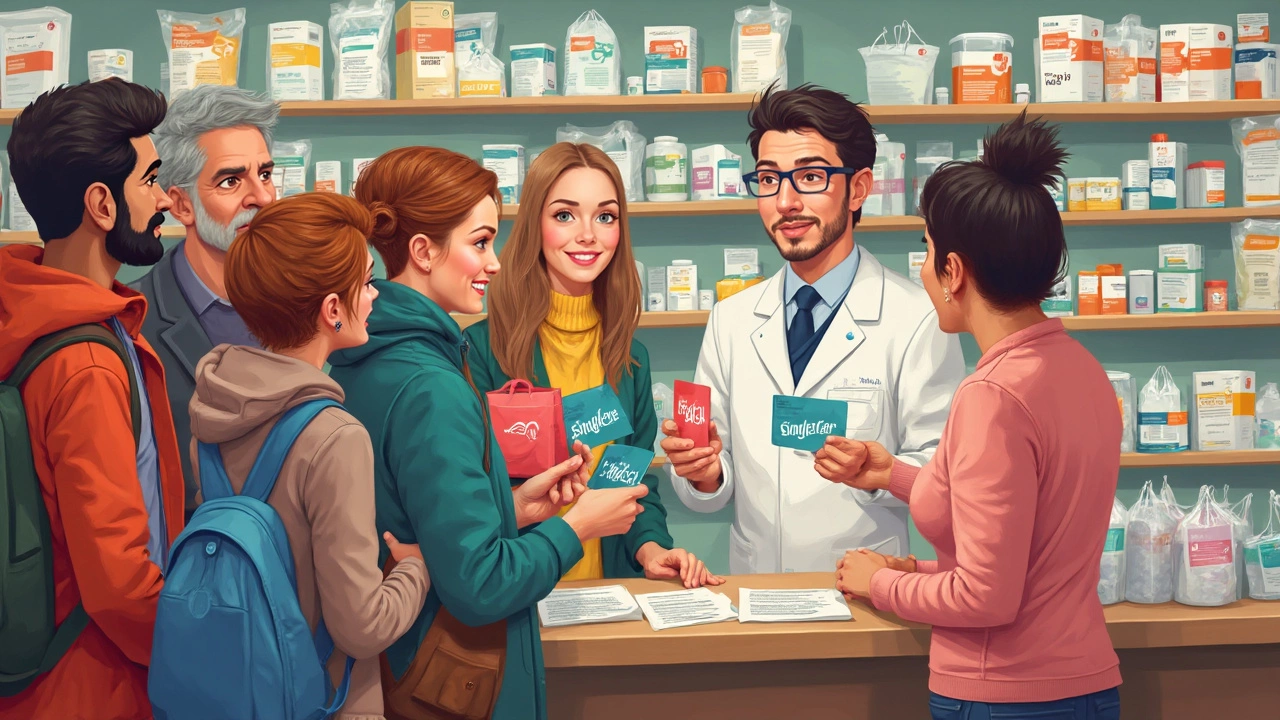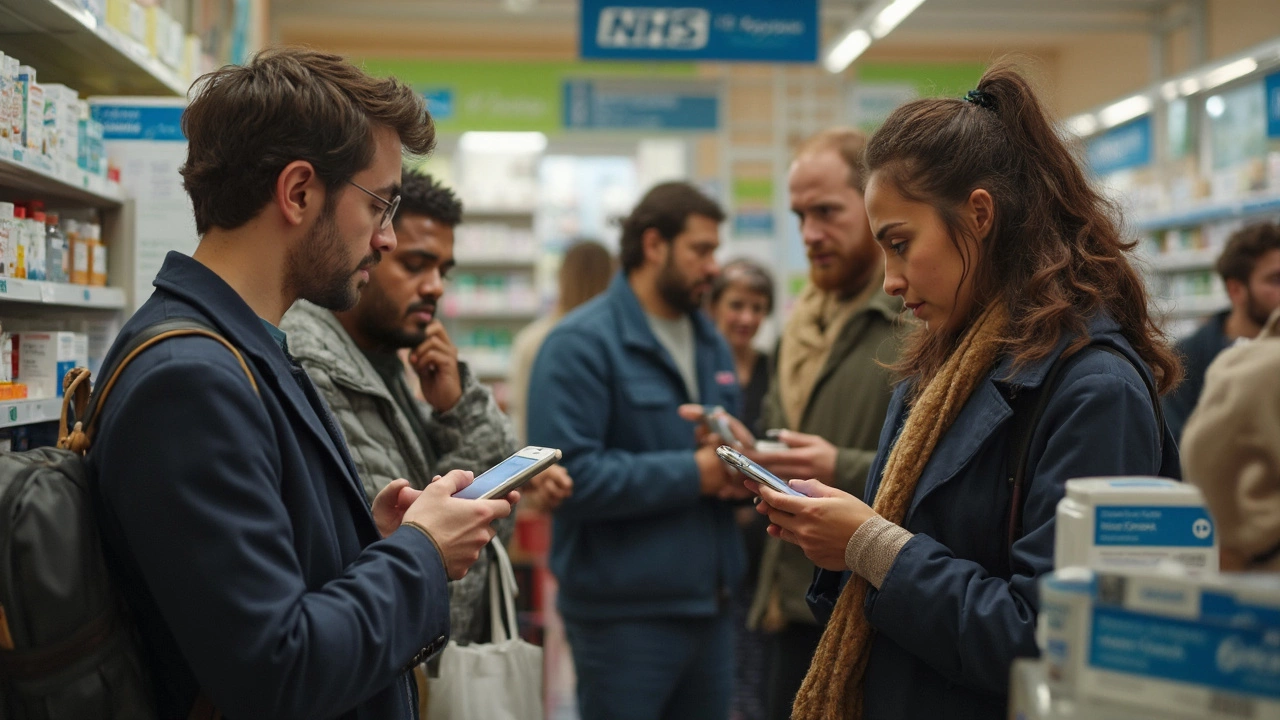Prescription Costs: Real Tips to Cut Your Medication Bills
If you’ve ever stared at a pharmacy receipt and felt the sting, you’re not alone. Prescription prices keep climbing, but you don’t have to accept them. Below are straight‑forward steps you can start today to keep more money in your pocket while still getting the meds you need.
First, always compare prices before you buy. A quick search on the pharmacy’s website or a price‑checking app can reveal a cheaper option just a few miles away. Even the same drug can cost 30% less at a different chain, so a few clicks save a lot.
Discount Cards and Apps That Actually Work
Discount cards like SingleCare, GoodRx, and the newer TopCashback Rx are free to sign up for and give you a preset discount at participating pharmacies. The trick is to check the price on the card’s website right before you head out; the discount can change daily.
Many apps also let you set price alerts. When the cost of your prescription drops, you get a notification, so you never pay more than you have to. If you have insurance, be sure the card doesn’t clash with your plan—some insurers treat the discount as a cash payment, which can affect your coverage.
Don’t forget about online prescription services. Platforms that let you order a repeat script and have it shipped often have bulk‑buy agreements with manufacturers, meaning the final price can be lower than a local pharmacy’s list price.
When You Might Get a Free Prescription
In the UK, certain medical conditions automatically qualify you for free NHS prescriptions. Diabetes, epilepsy, and chronic heart disease are just a few examples. To claim, you need a medical exemption certificate (Form REF). If you think you qualify, ask your GP for the form—getting it is free and can save you hundreds each year.
Even if you don’t meet the health‑condition criteria, you might still get a free prescription through the NHS Low Income Scheme. Your household income and savings are taken into account, and many retirees or students qualify.
For U.S. readers, senior citizens often benefit from government caps on drug costs or extra‑help programs. Checking eligibility can be as simple as a quick call to Medicare’s helpline.
Another tip: talk to your doctor about generic alternatives. Generic versions are chemically identical but cost a fraction of the brand name. If a brand drug is your only option, ask whether a therapeutic alternative exists—pharmacists can sometimes suggest a cheaper switch.
Finally, keep an eye on pharmacy loyalty programs. Some chains offer points that translate into cash discounts or free over‑the‑counter items. It’s a small perk, but over time it adds up.
Bottom line: you don’t have to accept high prescription costs as inevitable. By comparing prices, using discount cards, checking eligibility for free prescriptions, and chatting with your healthcare provider, you can shrink your medication bill without compromising care.
What Is the Lowest Income to Qualify for Medicare? Income Limits for Medicare Savings Programs in 2025
Medicare doesn't have income limits for basic coverage, but programs like Extra Help and Medicare Savings Programs can reduce prescription costs for those with low income. Learn the 2025 income limits and how to apply.
GoodRx Explained: How the Discount App Works and What to Watch Out For
Discover how GoodRx saves on prescriptions, where the discounts come from, potential data privacy issues, and when the app is truly worth using.
What Medical Conditions Qualify for Free Prescriptions? Essential Info for UK Patients
Certain health conditions let people in the UK get free prescriptions, which can save a lot of money each year. This article explains exactly which conditions are covered, how to get an exemption, and what proof you'll need if you qualify. You'll also learn practical tips for managing medication costs if you aren't eligible yet. Real examples and up-to-date info help make things simple and clear.
AARP Prescription Discounts: How Much Can You Really Save?
Curious if AARP actually helps you save on prescription costs? This article breaks down AARP’s prescription discount program, how it works, and who qualifies. Get handy tips on maximizing your savings at the pharmacy and see how AARP stacks up against other discount options. We’ll clear up what’s hype and what’s real when it comes to dropping your medication bills with AARP. Learn what you should keep in mind before signing up.
SingleCare vs GoodRx: Which Prescription Discount Is Actually Cheaper?
Trying to pay less for prescriptions? This article compares SingleCare and GoodRx to find out which one will actually save you more money. You'll get a real look at how these cards work, what kind of prices you can expect, and where each one stands out. Find out the tricks to getting the best deal, whether you’re picking up common meds or specialty drugs. Practical tips included, so you don’t waste cash at the pharmacy.
Best Prescription Discount Service: How to Save the Most on Meds
Prescription prices keep jumping, but with the right discount service, you can cut those costs—sometimes by more than half. This article breaks down major prescription discount services, compares how they work, and explains why prices vary so much between pharmacies. You'll learn practical tips for using discount cards or apps, and find out which service offers the best deals based on the latest info. Real examples, clear pros and cons, and common mistakes are all covered. If you need regular meds or just want a backup plan, this guide has your wallet covered.
Prescription Costs: How to Reduce Your Medication Bills
Paying for prescriptions feels like a guessing game, but there are smart ways to lower what you shell out at the pharmacy. This article breaks down why your meds cost so much and reveals tricks and programs that can help you pay less. Learn how to compare prices, use discount cards, talk to your doctor about cheaper alternatives, and take control of your medication costs. You'll pick up practical steps to make sure you're not paying more than you need to. No medical jargon—just real advice you can use right away.
Prescription Online: Can You Get One Without Seeing the Doctor?
Getting a prescription online without an in-person visit is possible, but it's not as simple as clicking a button. This article breaks down how online prescriptions work, the legal stuff you need to know, and what it actually costs. Discover tips to safely use virtual health services and avoid unexpected fees. Learn how telemedicine is changing healthcare—even for those who hate waiting rooms. Get the facts before you start searching for that quick online fix.
Best Online Prescription Service: Save Money and Stress
Wondering how to save money on medication and get prescriptions fast? This article compares top online prescription services, sharing real tips about prices, convenience, and safety. You'll learn which platforms are best for different needs and how to spot extra savings. Helpful facts make it easy to pick the right service for your budget and lifestyle. The focus is on practical advice, not just brand names.
Is Medicare Part A Free at Age 65? Everything You Need to Know
Curious if Medicare Part A is really free when you hit 65? This article breaks down who gets Part A without paying a premium, what it actually covers, and what sneaky costs might pop up. Learn how work history shapes your Medicare bill and why 'free' doesn't always mean you'll pay nothing. We’ll also tackle common surprises about prescription coverage. Know what to expect so you don’t get caught off guard.
The Drawbacks of Using GoodRx: What You Need to Know
While GoodRx offers significant discounts on prescription medications, there are certain drawbacks to consider. Users might face issues with fluctuating prices and pharmacy acceptability. Some pharmacies may not honor GoodRx coupons, leading to confusion and frustration at the checkout. Additionally, the lack of insurance integration sometimes complicates matters for those relying on insurance for part of their healthcare needs. Understanding these challenges can help users make more informed decisions about their medication purchasing methods.
Social Security and Prescription Costs: Maximizing Your Benefits
Navigating the intricate world of Social Security and prescription costs can be complex. Understanding the income limits for receiving Extra Help can make a significant difference in your finances. This article explains how much you can earn while still qualifying for additional assistance. Join us to learn tips and tricks for maximizing your benefits and reducing prescription costs through government programs.












